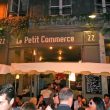General informations
Study french language with wine focus

Demography
241 000 inhabitants

Geography
On the Atlantic coast, in the south west of France, 500 km from Paris and 200 km from Spain.

Climate
Oceanic type with mild winters and hot summers.

Architecture
The old town is full of many stone monuments.

Cultural
Trendy and artistic

Food
Many specialties of Bordeaux and South West.

Tourisme
Major pole of the country.

Wine
At the gates of the city with among others Pessac Léognan .
Our advices
Things to see and do
- City Tour (Wednesday afternoon): Visit points of interest downtown: Grand Theater, Stock Exchange, The Quays, Doors, St. Catherine Street and other places.
- The Arcachon basin and Cap Ferret: enjoy the magnificent view. Picnic and sunset.
- Transfer to the night life on La Victoire (Friday night): Meeting with the population, live music and dance all night long.
- Dinner with a teacher (Tuesday evening) Sheds (Friday night):
- Enjoy trendy bars, dance clubs and great restaurants
Wine information
The vineyard of Médoc
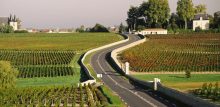
The Médoc is located on the left bank of the Gironde, and stretches 60 km from north to south and 10 km wide, which represents 10,600 ha.
The production of the Médoc vineyard, composed exclusively of red wines, amounts on average to 300,000 hectoliters / year.
With mild winters and hot summers, the Médoc enjoys a favorable climate for the vines. The proximity of the Landes forest protects the vineyards and serves as a filter for the sea wind. But the climate is not the only strength of the Médoc vineyard. Did you know that about 50 million years ago, the Medoc was only a vast sea? Today, the uniqueness of the Médoc wine is also linked to its two main types of soils: quartz pebbles and Garonne gravel.
The Médoc wines are produced from different grape varieties, the main ones being Cabernet Sauvignon, Merlot and Cabernet Franc.
The Médoc has many appellations that contribute to the reputation of the region every day. Haut Médoc, Médoc, Saint-Estèphe, Pauillac, Saint Julien, Listrac-Médoc, Moulis-en-Médoc and Margaux are the main ones.
This sub-region thus counts not less than 60 crus in the 1855 classification, ie 20% of its production. The first 5 grands crus of the Médoc are Château Lafite Rothschild (Pauillac), Château Latour (Pauillac), Château Margaux (Margaux), Château Mouton Rothschild (Promoted 1er cru to the revision of 1973) and Château Haut-Brion (Pessac-Leognan de the region of Graves). The Médoc classified growths weigh heavily in the sales turnover of the Bordeaux region.
The vineyard of Saint Emilion
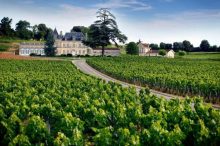
The right bank subregion refers to the right bank of the Gironde and Dordogne north of Bordeaux. It includes to the north-west the vineyards of Bourgeais and Blayais, in the center those of Libournais, with Saint-Emilion, Pomerol and Fronsac and east that of Castillon.
The soils are mainly clay-limestone (Fronsac, Saint-Emilion) or consist of serious (Pomerol). The dominant grape is Merlot, often associated with Cabernet Franc and Cabernet Sauvignon in Libournais. The wines of bourgeais and blayais come mainly from the Merlot and Cabernet Franc grape varieties for the reds, and from Semillon, Sauvignon and Colombard, a grape from neighboring Cognac, for whites. In Castillon, the wines are essentially red: Merlot is the dominant grape of the blend. It is, however, often associated with cabernet franc and cabernet sauvignon.
The vineyard of Graves
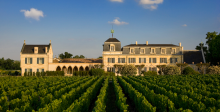
The Graves region is located south of the Medoc on the left bank of the Gironde between the city of Bordeaux and that of Langon 60 kilometers, the southernmost region of Bordeaux. This region represents 4.4% of Bordeaux vineyards and produces 240,000 hl / year.
The climate is oceanic temperate, and the Garonne brings its sweetness. The atmospheric conditions are warmer and wetter than in the Médoc, which leads to an earlier ripening of the grape varieties. The constitution of the soil varies from north to south of the appellation: gravel and sand or sand, clay and silt or simply clay sand. Cabernet Sauvignon and Merlot, two red grape varieties, are the basis of the red wines produced in this region. Cabernet Franc and Malbec can also be used. The main grape varieties used in the production of white wines are Sauvignon and Semillon.
73% of AOC production concerns red wines, 27% for white wines and sweet wines. Three AOCs are distinguished: the Graves, Graves Superiors (only for liquoreux and soft) and Pessac-Léognan. The Pessac-Léognan appellation, created in 1987, is an appellation of prestige that includes Château Haut-Brion. It will be the only castle outside the Médoc to be part of the classification of 1855, as 1er cru classé.
The vineyard of Sauternes
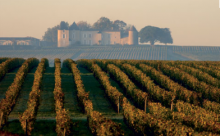
The Sauternais vineyard is crossed by the Ciron, which is a small tributary river of the Garonne. The almost magical combination of the heat and humidity of this river favors the development of a bacterium, Botrytis cinerea. It is this mushroom that forms what is called noble rot, especially suitable for the Semillon grape variety. This mushroom concentrates the sugars of the grape and gives Sauternes wines this particular candied fruit aroma.
Sauternes wines are 80% Semillon, Sauvignon and some Muscadelle. To bear the name of Sauternes or Barsac the wines must have been produced with vines at the maximum yield of 25 hectoliters per hectare and must have been harvested by hand.
For all these reasons, the Sauternes and Barsac wines are considered exceptional white wines. Château d’Yquem is however the only Premier Cru Supérieur in the classification of 1855. But many other wines of this region are first class wines like Château Rieussec or Château La Tour Blanche. Others like Château Caillou and Château Lamothe are Sauternes second-growth wines.
Bordeaux, France
French of Wine – Bordeaux
In the pedestrian area of the commercial district





